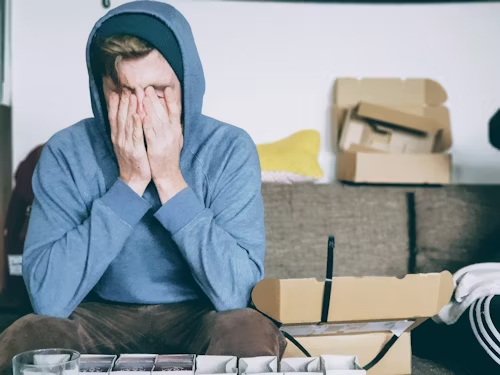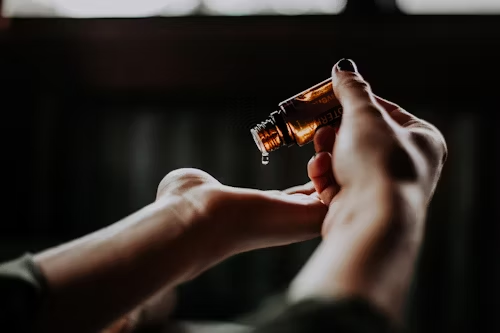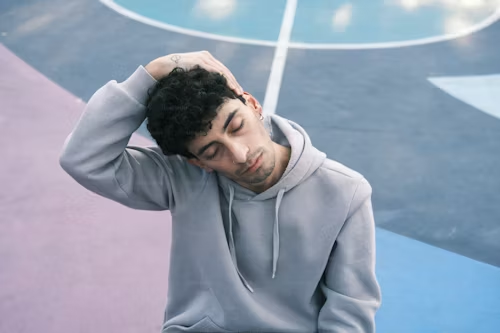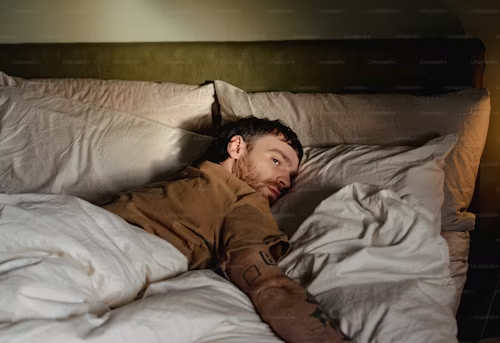Table of Contents
Introduction
The digital age, with its myriad of technological advancements, has undeniably transformed the fabric of our daily lives. From the way we work to the methods we use to communicate and entertain ourselves, technology has become an omnipresent force, seamlessly intertwining itself into the very essence of our existence. Yet, as we revel in the unprecedented convenience that these innovations provide, we must also grapple with the emerging challenges that arise from their overuse. The relationship between technology, sleep, and mental health is a complex and multifaceted one, often painted with strokes of paradox. The very tools designed to enrich our lives are, in some cases, contributing to the degradation of our physical and emotional well-being.
Sleep & Mental Wellness As we navigate the digital landscape, it is imperative to recognize the profound impact that technology has on our sleep patterns and mental states. Insomnia, anxiety, depression, and cognitive fatigue are but a few of the conditions that are becoming increasingly prevalent in the shadow of our screen-dominated lives. These concerns are not merely the byproducts of our modern world; they are interconnected phenomena that demand our attention and action.
In this comprehensive blog series, we will delve deeply into the intricate web that binds excessive digital consumption to sleep disruptions and mental health issues. We will explore the nuances of this relationship, examining the underlying physiological and psychological mechanisms that contribute to the challenges we face. Most importantly, we will arm ourselves with a toolkit of strategies to mitigate the negative impact of technology on our lives and cultivate a positive mindset that promotes both restful sleep and mental wellness.

Section 1: Unraveling the Digital Impact on Sleep and Mental Health
The Unsettling Link Between Screen Time and Sleep Disturbances
In the quest to understand the pervasive influence of digital technology on our sleep and mental health, it is crucial to examine the connection between the two. The human body operates on an internal biological clock known as the circadian rhythm, which is largely governed by the natural cycle of light and darkness. Screens, emitting a specific type of blue light, have been shown to interfere with this delicate balance by suppressing the production of melatonin, a hormone that regulates our sleep-wake cycle.
When we are exposed to blue light, particularly in the hours leading up to bedtime, our brains are deceived into believing that it is still daytime. This can significantly disrupt our ability to fall asleep and can lead to a cascade of issues that affect not just the quality of our slumber but the quantity as well. Research has indicated that individuals who spend more than four hours daily in front of digital devices are at a substantially higher risk of developing sleep disorders, such as insomnia and restless leg syndrome.
The pervasive nature of technology in our lives has led to a culture of “revenge bedtime procrastination,” where we stay up late into the night, using our devices as a means to claim personal time and autonomy. This pattern further exacerbates sleep deprivation and contributes to the cycle of chronic fatigue that so many of us face today. The difficulty in both initiating and maintaining sleep that arises from excessive screen time can have severe repercussions on our overall health and well-being.
The Dark Side of Social Media: Nurturing Mental Health in a Digital World
Social media platforms have become an integral part of our daily lives, offering us the opportunity to connect with friends and family across vast distances and share moments of our lives in real-time. Yet, beneath the veneer of connectivity, there lies a breeding ground for mental health concerns. The constant exposure to the curated highlights of others’ lives can lead to a damaging cycle of comparison, where we judge our own worth against unrealistic standards.
This phenomenon, often referred to as “comparison culture,” has been linked to a range of mental health issues, including low self-esteem, anxiety, and depression. The fear of missing out (FOMO) is another byproduct of social media use, pressuring individuals to stay connected and engaged, even at the cost of their mental health. It is essential to recognize the impact that social media has on our well-being and to take proactive steps to manage our engagement with these platforms.
Setting clear boundaries, such as limiting the amount of time spent scrolling through feeds, and prioritizing face-to-face interactions can help mitigate the negative effects of social media. By focusing on the quality of our relationships and the authenticity of our experiences, we can begin to reclaim a sense of balance and belonging that is not contingent on digital validation.
Navigating the Waters of Digital Overload: Cognitive Fatigue and Its Effects
The human brain is a marvelous organ, capable of processing vast amounts of information. However, the sheer volume of digital stimuli that we encounter daily can push it to its limits. Multitasking across various digital mediums—email, social media, instant messaging, and beyond—can leave us feeling overwhelmed and mentally drained.
The constant barrage of notifications and the need to be “always on” can lead to cognitive fatigue, a state where our ability to retain information and concentrate effectively is compromised. This overstimulation can manifest as brain fog, difficulty focusing, and decreased productivity. It is essential to recognize the signs of cognitive fatigue and to implement strategies that allow our brains to recover and recharge.

Section 2: Cultivating a Positive Mindset and Enhancing Sleep Quality
Embracing a Digital Detox Lifestyle
The first step in our journey towards better sleep and mental wellness is to establish a digital detox routine. This involves setting clear boundaries with technology, such as designating phone-free zones during meals and implementing a strict no-screens policy at least one hour before bedtime. By doing so, we can begin to wean ourselves off the digital crutch that so many of us have come to rely on.
Incorporating activities that promote relaxation and enjoyment, such as reading a physical book or practicing yoga, can help us unwind and prepare for a restful night’s sleep. These small yet significant lifestyle changes can lead to a greater sense of balance and control in our lives, reducing stress and fostering a more positive relationship with technology.
Filtering the Blue: The Importance of Regulating Screen Light Exposure
To combat the disruptive effects of blue light on our sleep cycles, it is advisable to adopt certain strategies. Enabling the night mode feature on our devices, which reduces the intensity of blue light emitted from the screen, can be a simple yet effective solution. Additionally, investing in blue light-blocking glasses or installing blue light-filtering apps can help mitigate the impact of technology on our circadian rhythms.
Another approach is to adjust the color temperature of our screens to warmer hues as the day progresses. This subtle shift can help signal to our brains that it is time to wind down and prepare for sleep. By making these adjustments, we can create a more conducive environment for restorative slumber.
Mastering the Art of Mindful Technology Usage
Mindfulness is not just a buzzword; it is a powerful tool that can be applied to our digital habits. By practicing mindful technology usage, we become more intentional about when and how we engage with our devices. This means being present and fully engaged in our interactions rather than succumbing to the mindless scroll.
To achieve this, we can disable non-essential notifications, establish tech-free periods during the day, and become more aware of our screen time patterns. Utilizing apps that track and limit our digital consumption can provide valuable insights and help us maintain a balanced lifestyle. By bringing consciousness to our technology use, we can begin to reclaim our time and attention.
The Healing Power of Offline Hobbies and Interactions
Engaging in activities that do not require a screen can have a profound impact on our mental well-being. Pursuing hobbies that engage our creativity and encourage physical activity can help us disconnect from the digital world and reconnect with ourselves.
Whether it’s taking a leisurely stroll in nature, painting a canvas, or mastering a new recipe, these offline endeavors allow us to cultivate a sense of accomplishment and joy that is not contingent on digital validation. They also serve as a reprieve from the constant mental stimulation that technology provides, offering our brains the downtime they need to recharge and refocus.
Creating a Sleep Sanctuary: The Fundamentals of Sleep Hygiene
Developing a robust sleep hygiene routine is vital for achieving high-quality rest. This involves creating an environment that is conducive to sleep, maintaining a consistent sleep schedule, and establishing a pre-sleep routine that promotes relaxation.
Ensuring that our bedrooms are cool, dark, and devoid of electronic devices is a foundational element of good sleep hygiene. Additionally, adopting calming rituals such as taking a warm bath or practicing deep breathing exercises can signal to our bodies that it is time to wind down.

Gratitude and Journaling: A Path to Mental Clarity
The practice of gratitude has been shown to significantly improve our mental health. By setting aside time each day to reflect on the things we are thankful for, we can shift our focus from the stressors and negativity that often dominate our thoughts. Journaling about these experiences can serve as a cathartic release and reinforce a positive mindset.
Before drifting off to sleep, consider writing down three things for which you are grateful. This simple act can foster a sense of contentment and encourage a more optimistic perspective on life. Over time, this practice can enhance resilience and contribute to a more profound and sustainable sense of well-being.
The Enlightened Use of Technology for Mental Health
While technology can be a source of distraction and stress, it can also serve as a powerful ally in our quest for mental wellness. There are numerous applications available that offer guided meditations and sleep aids, such as Headspace and Calm, which can help us unwind and prepare for a restful night.
Moreover, sleep tracking apps can provide valuable insights into our sleep patterns, allowing us to identify areas for improvement and make informed decisions about our bedtime routines. By harnessing technology in a way that supports rather than undermines our mental health, we can achieve a harmonious balance in our digital lives.

Conclusion
In summary, the digital age presents us with a dual challenge: to embrace the conveniences of technology while safeguarding our sleep and mental well-being. By acknowledging the impact of excessive digital consumption and taking proactive steps to manage it, we can begin to reclaim our nights and, in turn, our lives.
The journey to a more balanced relationship with technology starts with small, consistent changes. Whether it is implementing a digital detox, managing our social media habits, or engaging in mindful tech use, each step we take can lead us closer to a life filled with restful sleep and mental clarity.
This blog series is designed to serve as a roadmap for those seeking to navigate the complexities of technology in the modern world. Through the exploration of the various strategies and tools available, we can empower ourselves to live more consciously, prioritizing our well-being and fostering a positive mindset that allows us to thrive in an increasingly digital world.
Embark on this journey with us, as we delve deeper into the nuances of technology’s impact on sleep and mental health. Together, let us discover the path to a more balanced and fulfilling life, where technology enhances rather than detracts from our vitality and joy.
Sleep & Mental Wellness Sleep & Mental Wellness Sleep & Mental Wellness Sleep & Mental Wellness Sleep & Mental Wellness Sleep & Mental Wellness v Sleep & Mental Wellness Sleep & Mental Wellness Sleep & Mental Wellness Sleep & Mental Wellness Sleep & Mental Wellness Sleep & Mental Wellness Sleep & Mental Wellness Sleep & Mental Wellness Sleep & Mental Wellness Sleep & Mental Wellness Sleep & Mental Wellness Sleep & Mental Wellness Sleep & Mental Wellness Sleep & Mental Wellness Sleep & Mental Wellness Sleep & Mental Wellness v Sleep & Mental Wellness